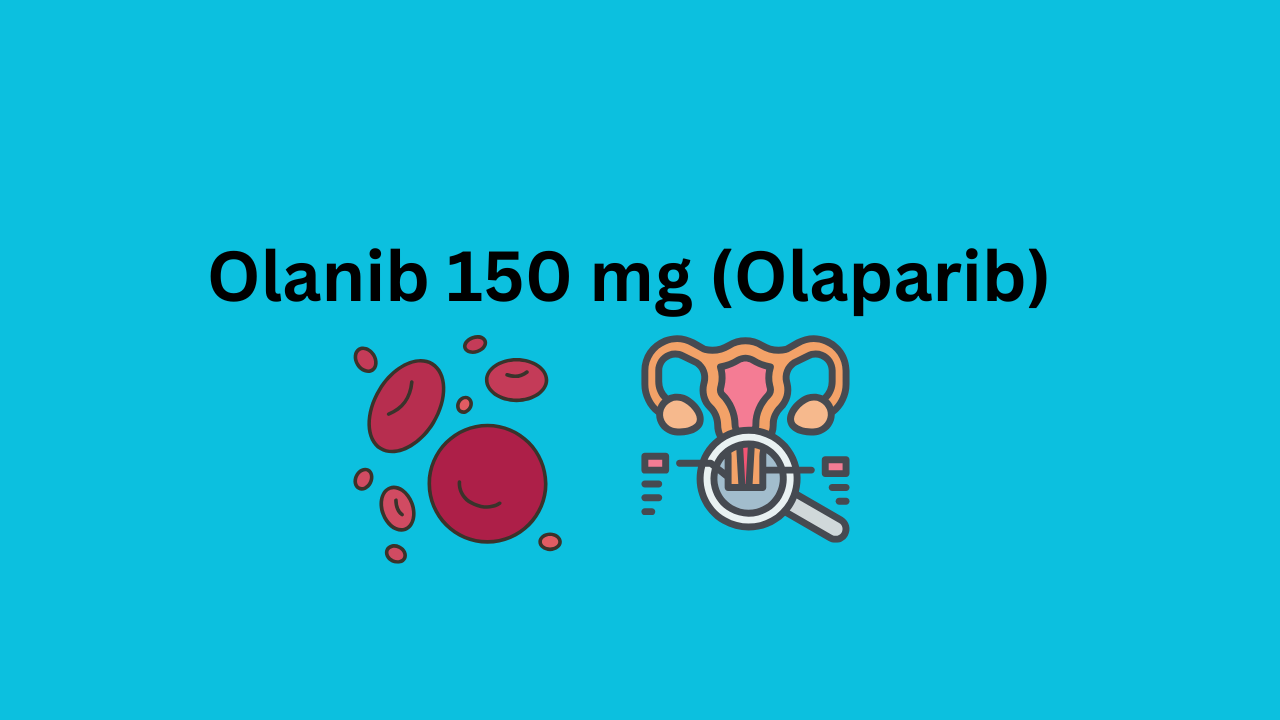
Olanib 150 mg, a formulation of Olaparib, is an advanced pharmaceutical used primarily in oncology for the treatment of specific types of cancer. This targeted therapy has revolutionized cancer treatment by leveraging the science of DNA damage repair (DDR) to selectively target cancer cells, thereby minimizing harm to healthy tissues. Manufactured under stringent quality standards, Olanib 150 mg stands as a vital component in the fight against cancer.
Olaparib belongs to a class of drugs known as PARP inhibitors (Poly ADP-ribose polymerase inhibitors). PARP is an enzyme involved in repairing DNA damage in cells. Cancer cells often exploit PARP to repair their DNA and continue proliferating. Olaparib works by inhibiting PARP activity, thereby preventing cancer cells from repairing DNA damage. This leads to the death of cancer cells, particularly those with pre-existing DNA repair deficiencies, such as BRCA1 and BRCA2 mutations.
Olanib 150 mg has demonstrated significant efficacy in treating various cancers, especially ovarian, breast, pancreatic, and prostate cancers. Its targeted mechanism ensures precise intervention, making it an essential tool in modern oncology.
Key Features of Olanib 150 mg
- Targeted Therapy: Specifically designed for cancers with BRCA1/BRCA2 mutations and other homologous recombination deficiencies (HRD), ensuring personalized treatment.
- Oral Administration: Available as a convenient oral tablet, eliminating the need for intravenous infusions and improving patient compliance.
- Effective Cancer Management: Reduces tumor growth, prolongs progression-free survival, and enhances quality of life in eligible patients.
- High Tolerability: Generally well-tolerated, with manageable side effects under medical supervision.
Indications
Olanib 150 mg is approved for use in the following conditions:
- Ovarian Cancer: Maintenance therapy for patients with advanced ovarian cancer who have responded to platinum-based chemotherapy.
- Breast Cancer: Treatment of HER2-negative metastatic breast cancer with BRCA mutations.
- Pancreatic Cancer: Maintenance therapy for patients with germline BRCA-mutated metastatic pancreatic cancer.
- Prostate Cancer: Therapy for BRCA-mutated metastatic castration-resistant prostate cancer.
Olaparib is typically used in patients whose cancers have specific genetic alterations, making genetic testing a crucial step before initiation.
Dosage and Administration
Olanib 150 mg is usually taken twice daily, with or without food, as prescribed by a healthcare provider. The dosage may vary based on individual factors such as the type of cancer, genetic profile, and overall health.
Patients are advised to:
- Swallow the tablet whole without crushing, chewing, or breaking it.
- Follow the dosing schedule strictly to maximize therapeutic benefits.
- Avoid grapefruit or grapefruit juice during the treatment, as it may interfere with drug metabolism.
Missed doses should not be doubled up; instead, patients should resume their regular schedule at the next planned dose.
Mechanism of Action
Olaparib works by exploiting the concept of “synthetic lethality” in cancer cells. It inhibits PARP enzymes, which are crucial for repairing single-strand DNA breaks. In cancer cells with defective homologous recombination repair pathways (e.g., due to BRCA mutations), this dual inhibition leads to the accumulation of irreparable DNA damage, ultimately causing cell death. This selective targeting spares healthy cells, reducing systemic toxicity.
Side Effects
While Olanib 150 mg is generally well-tolerated, some patients may experience side effects, including:
- Fatigue
- Nausea and vomiting
- Anemia
- Decreased appetite
- Diarrhea or constipation
- Abdominal pain
- Low platelet count
Rare but serious side effects include myelodysplastic syndrome (MDS) and acute myeloid leukemia (AML). Regular monitoring of blood counts and periodic assessments are essential to detect and manage such adverse events early.
Precautions and Warnings
Patients considering Olanib 150 mg should be aware of the following:
- Pregnancy and Breastfeeding: Olaparib can cause harm to a developing fetus and is not recommended during pregnancy or breastfeeding. Effective contraception should be used during treatment.
- Drug Interactions: Co-administration with certain medications, including strong CYP3A inhibitors or inducers, may affect drug efficacy.
- Renal and Hepatic Impairment: Dose adjustments may be necessary for patients with kidney or liver dysfunction.
- Allergic Reactions: Any signs of hypersensitivity, such as rash or swelling, should be reported immediately.
Conclusion
Olanib 150 mg (Olaparib) is a groundbreaking therapy offering hope to patients with BRCA-mutated cancers. By targeting cancer cells at their genetic core, it paves the way for personalized medicine and improved outcomes. However, its use requires careful patient selection, regular monitoring, and adherence to prescribed guidelines to ensure safety and efficacy.
Always consult an oncologist or healthcare professional before starting Olanib 150 mg to determine its suitability based on your specific condition.